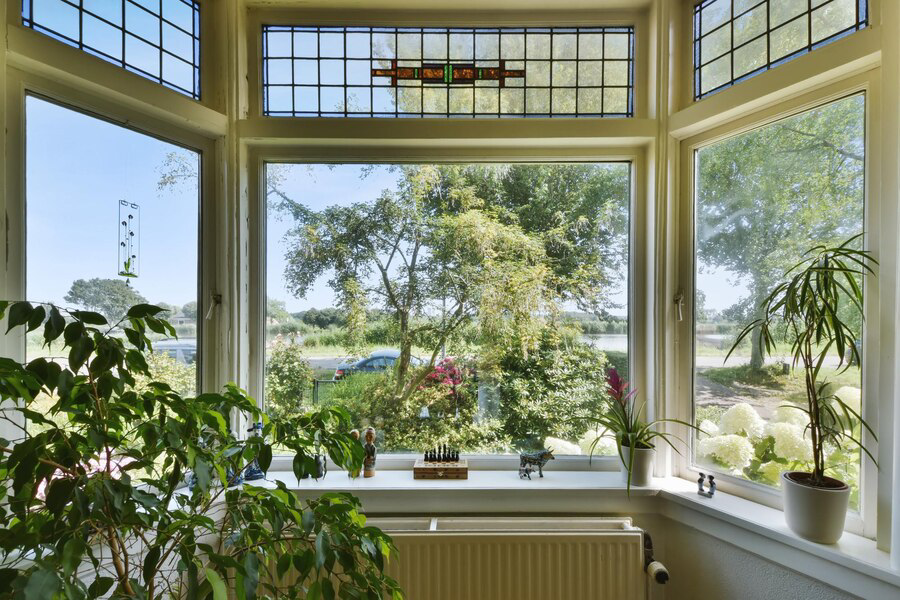
How Replacement Windows Can Improve Indoor Air Quality
In today’s world, where air quality is increasingly recognized as a critical factor in overall health and well-being, the role of replacement windows in improving indoor air quality cannot be overstated. Old or poorly sealed windows can allow pollutants, allergens, and even mold spores to infiltrate your home, compromising the air you breathe daily. By opting for modern replacement windows, equipped with advanced sealing technologies and efficient filters, homeowners can effectively mitigate these risks. Replacement windows offer a dual benefit: they not only enhance the energy efficiency of your home by preventing drafts and reducing heating and cooling costs but also create a healthier indoor environment. Improved seals and materials mean fewer outdoor pollutants enter your living space, resulting in cleaner air for you and your family to breathe. As awareness grows about the impact of indoor air quality on respiratory health and overall comfort, choosing replacement windows becomes a proactive step towards ensuring a safer and more pleasant living environment.
Introduction to Indoor Air Quality and its Importance
Indoor air quality (IAQ) refers to the air quality within and around buildings and structures, especially as it relates to the health and comfort of occupants. It is influenced by various factors such as building materials, ventilation systems, cleaning protocols, and the activities conducted indoors. Poor indoor air quality can lead to a range of health problems, from minor irritations to serious illnesses, making it a critical aspect of indoor environmental quality management.

Health Impacts
The foremost reason for prioritizing indoor air quality is its direct impact on human health. Poor IAQ has been linked to respiratory diseases, allergies, asthma, and other serious conditions. People spend a significant amount of time indoors, especially in workplaces and homes, where exposure to indoor pollutants can accumulate over time.
Productivity and Comfort
Good indoor air quality enhances the comfort and well-being of occupants, thereby improving productivity in workplaces and fostering a better quality of life at home. Proper ventilation and control of indoor pollutants contribute to a more pleasant indoor environment.
Environmental Concerns
Indoor air pollutants can originate from both indoor and outdoor sources. Addressing IAQ not only improves the health of building occupants but also contributes to overall environmental sustainability by reducing energy consumption associated with inefficient ventilation and heating systems.
Regulatory Standards
Governments and regulatory bodies have established guidelines and standards for indoor air quality to protect public health. Compliance with these standards is essential for businesses and institutions to ensure a safe and healthy environment for their occupants.
Building Performance
The design and maintenance of buildings play a crucial role in determining indoor air quality. Factors such as building materials, HVAC (heating, ventilation, and air conditioning) systems, and proper operation and maintenance practices all influence IAQ. Well-designed and maintained buildings can effectively mitigate indoor air pollutants.
Understanding the Role of Windows in Indoor Air Quality
Windows play a crucial role in the ventilation and overall indoor air quality (IAQ) of buildings. They serve as interfaces between indoor and outdoor environments, allowing for the exchange of air, light, and sometimes sound. Properly designed and maintained windows contribute significantly to a healthy indoor environment by facilitating natural ventilation, reducing the buildup of indoor pollutants, and enhancing occupant comfort.
Natural Ventilation
Windows are primary conduits for natural ventilation, allowing fresh outdoor air to enter and stale indoor air to exit. This natural exchange helps dilute indoor pollutants such as volatile organic compounds (VOCs), carbon dioxide (CO2), and airborne particles, thereby improving IAQ.
Airflow Control
Properly positioned windows can be strategically used to control airflow patterns within a building. Cross-ventilation, for example, can be achieved by opening windows on opposite sides of a room, promoting effective air circulation and reducing stagnant air pockets where pollutants can accumulate.
Temperature Regulation
Windows also play a role in regulating indoor temperatures. During warmer months, opening windows allows for passive cooling by facilitating the flow of cooler outdoor air. This reduces the need for mechanical cooling systems, thereby conserving energy and reducing environmental impact.
Daylighting
Beyond ventilation, windows contribute to daylighting, which enhances the visual and psychological comfort of building occupants. Exposure to natural light has been shown to improve productivity, mood, and overall well-being. Well-designed windows can maximize daylight penetration while minimizing glare and heat gain.
Moisture Control
Proper ventilation through windows helps manage indoor humidity levels. Excessive moisture can lead to mold and mildew growth, which not only degrades indoor air quality but also poses health risks. Adequate ventilation via windows helps prevent moisture buildup and its associated problems.
Benefits of Installing Energy-Efficient Replacement Windows
Energy-efficient replacement windows offer a range of advantages beyond just reducing energy bills. They are designed to enhance comfort, improve indoor air quality, and contribute to environmental sustainability. Here are key benefits to consider when opting for energy-efficient replacement windows:
- Energy Savings: Lower utility bills due to reduced heat loss in winter and heat gain in summer, thanks to improved insulation properties.
- Enhanced Comfort: Better temperature regulation and reduced drafts create a more comfortable indoor environment year-round.
- Improved Indoor Air Quality: Tighter seals and advanced materials minimize dust, pollen, and outdoor pollutants from entering the home.
- UV Protection: Low-emissivity coatings help reduce UV damage to furniture, flooring, and fabrics.
Conclusion
Upgrading to replacement windows is not just about enhancing the aesthetics and energy efficiency of your home; it’s also a proactive step towards improving indoor air quality (IAQ). By sealing off drafts and leaks, modern replacement windows prevent outside pollutants like dust, pollen, and allergens from entering your living spaces. This is particularly crucial for individuals sensitive to airborne particles or suffering from respiratory conditions, as cleaner air indoors can lead to improved health and overall well-being.
If you’re considering replacing your windows to boost IAQ, EZ Window Solutions of Cleveland is your trusted local expert. Serving Cleveland, Ohio, our team specializes in high-quality window installations that prioritize both functionality and style. Contact us today at 440-773-4396 to schedule a consultation and discover how our customizable window solutions can transform your home into a healthier and more comfortable environment for you and your family. Improve your indoor air quality with EZ Window Solutions and breathe easier every day!


Write a Comment